Engineering Technology Sciences in Finding the Relationship Between Two Dimensional Shapes and Three-Dimensional Shapes for Children and Printing Them
Halima Onalla Ali1*, Mohsen Elsaraiti2, Zaid Alamin Alhashimi3 and Enes Sukic4
University Union Nikola Tesla Faculty of information technology and engineering Belgrade, Serbia
Submission:August 14, 2023; Published:August 25, 2023
*Corresponding author:Halima Onalla Ali, University Union Nikola Tesla Faculty of information technology and engineering Belgrade, Serbia
How to cite this article:Halima Onalla A, Mohsen , Zaid Alamin A, Enes S. Engineering Technology Sciences in Finding the Relationship Between Two Dimensional Shapes and Three-Dimensional Shapes for Children and Printing Them. Curr Trends Biomedical Eng & Biosci. 2023; 21(5): 556072 DOI:10.19080/CTBEB.2023.21.556072
Abstract
Science and engineering technology in finding the relationship between two-dimensional shapes and three-dimensional shapes for children how can you help them, explore and study three dimensional figures and print them. It is important to have examples in the children’s classroom, there are many plastic commercial products that can be purchased and used to make three dimensional shapes, and the question arises, is there a possibility to easily make such special shapes from reusable materials: such as plastic, cardboard, and thick papers? Aiding the child to know the number of the project of drawing shapes, their sides and vertices, and drawing two dimensional shapes accurately using a ruler or dot paper. The question comes, what do we benefit from geometric shapes? The world overflows with geometric shapes, and since geometric shapes surround us from every side, our understanding and appreciation of our world will be better if we learn something about engineering. Engineering also has practical applications in many fields. Architects and carpenters need to understand the properties of geometric shapes to construct safe and attractive buildings, and the benefits of learning geometric shapes for children? Geometric shapes help build memory and cognitive skills, especially when children begin to relate shapes to the world around them, and finding similarities and differences between geometric shapes helps to develop concentration and observation skills and strengthen visual memory, and through it learning geometric colors for children whose benefits include drawing small drawings around us. Also, information about the surroundings of the drawing, and educational tools that help the child to learn and understand a number of skills and help in building computer skills for children in the future. Three-dimensional: they are shapes that have length, width, and height. Three-dimensional shapes have three dimensions: length, width, and height. Such as cuboid, cube, triangular prism, pyramid, cone, cylinder, and finally the ball, we can show children 3D and 2D shapes, and although learning this may be difficult for them, so the 3D shape can be described as something that can be held such as books, pens, bags, and other things. Defining two dimensional shapes as things that can be seen but cannot be lifted, such as a picture of a lion, a drawing of a person, or a cube on paper, and although the paper on which the lion is depicted can be lifted, it cannot Lift the lion or the same person from the paper and then ask the children to suggest other things that could be considered as two-dimensional or three-dimensional shapes in the classroom. Some children will be very excited to differentiate between these things, but others may find it difficult to believe that a piece of paper can be three-dimensional “not thick” enough.
Keywords: Dimensions; Print; Graphics; Ribs; Skills; Focus; Similarities; Differences; Development; Stereo; Holograms; Educational Curricula; Geometric Shapes; Three-Dimensional; 3d Printing; Stereoscopic Images
Introduction
Two-dimensional shapes
A two-dimensional shape is a shape that has two dimensions that can be measured, meaning the length of the shape can be measured and the width of the shape can be measured, for example, a square is a two-dimensional shape, and all sides of the square are straight lines, a circle is also a two-dimensional shape, but the circle has a curved edge.
3D shapes (holograms)
A 3D figure is a shape that has three dimensions: length, width, and height. You can put the 3D shape in your hand and hold it Figure 1.
The difference between 2D and 3D shapes
Two-dimensional (flat) shapes are shapes that have only two dimensions: length and width. A square or circle can be drawn on piece of paper and you have a two-dimensional shape. Dimension is something that can be measured like length and width. Three-dimensional (stereo) shapes are shapes that have three dimensions: length, width, and height Figure 2.
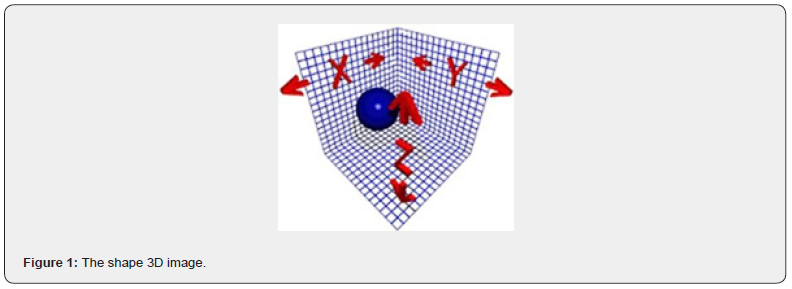
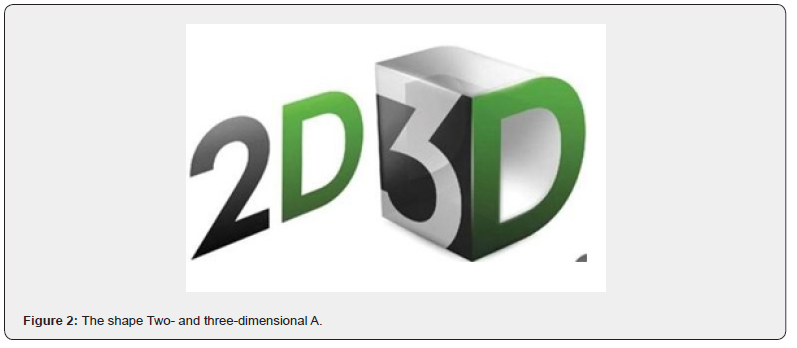
plan for drawing two-dimensional shapes can be drawn up:
This plan includes the study of objectives, requirements, and uncontained points in which children learn how to draw twodimensional shapes using their attributes. The Aims Enabling children to:
a) Draw two-dimensional shapes knowing their names.
b) Draw two-dimensional shapes given the number of sides and vertices.
c) Draw 2D shapes accurately using a ruler or dot paper.
Requirements
1. Children should be already familiar with common 2D shapes knowledge 2. The number of sides and vertices in common 2D shapes [1-3].
What are the best ways to teach 3D images to children?
a) Teaching young children this guide, it was designed for educational curricula.
b) These exercises contain a set of activities that contain them; Teaching 3D ideas for kids, varied coloring and tracing work activities. These activities have the ability to work in education and repetition.
Teaching 3D shapes to children:
How much do we know that the three-dimensionality is that you can place three-dimensional (stereoscopic) shapes that have three dimensions: length, width and height. Dimensions in your hand and hold.
3D shapes
A 3D hologram is an image that makes your viewing experience more realistic and interesting. 3D is used in medicine, cinema and many other fields. 3D display technology was invented years ago and first appeared in blue/red glasses and stereoscopic images.
Discover 3D geometry
We cannot explore and study 3D objects, it is important to have examples in the classroom. There are many plastic commercial products you can buy and use to make 3D shapes, but it’s easy to make your own from recycled materials like plastic, cardboard, and thick paper. Making their own shapes will help pupils better understand the properties of the shapes. Plastic straws can be used with string and wire to build 3D model ‘skeletons’. And as a teacher, get in the habit of keeping useful items that can be used in the classroom - for example, keep a straw whenever you buy a cold drink. The ready-made charts can be taken to different shapes and folded to be used for storage. In this section, you will use two methods to help children explore the difference between two-dimensional shapes and three-dimensional objects [4-6].
Differentiate between 3D and 2D shapes:
We can show children the three-dimensional and twodimensional shapes, and although learning this matter may be difficult for them, so the three-dimensional shape can be described as something that can be carried such as books, pens, bag ....... and other things, and the definition of two-dimensional shapes they are things that can be seen but cannot be lifted: such as a picture of a lion, a drawing of a person, or a cube on paper, and although the paper on which the lion is depicted can be lifted, the lion or the person itself cannot be removed from the paper, and then we can ask the children to suggest other things They can be thought of as 2D or 3D shapes in the classroom. Some children will be very excited to differentiate between these objects, but others may find it difficult to believe that a piece of paper can be 3D that is “not thick” enough Figure 3.
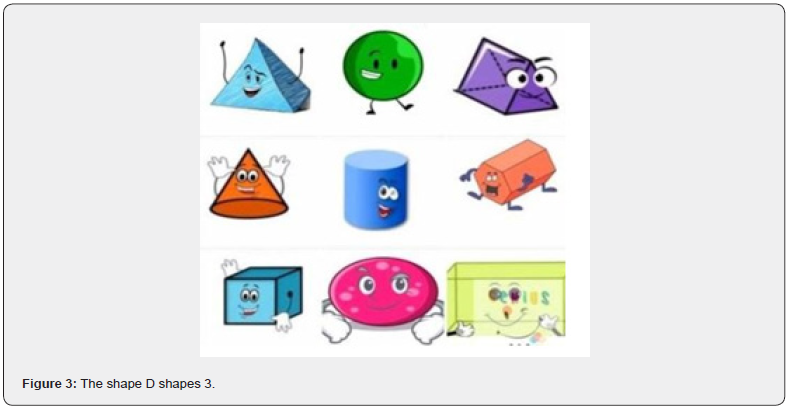
Understanding 3D polygonal shapes
Before providing this information, you will need to collect some 3D objects and box them. Then we organize the children into groups of six to eight. We ask the children to carefully note the objects in the box. Then we ask them about geometric shapes such as squares and rectangles that can be recognized in these objects. Introduce them to the names of the objects (cube, prism, pyramid, cone, sphere, or cylinder). After this exercise, we ask them if they know of some other similar things at school or near their homes. Explain that all solids except cylinders and spheres can also be called 3D polygons and then ask them to guess why cylinders and spheres are not 3D polygons Figure 4.
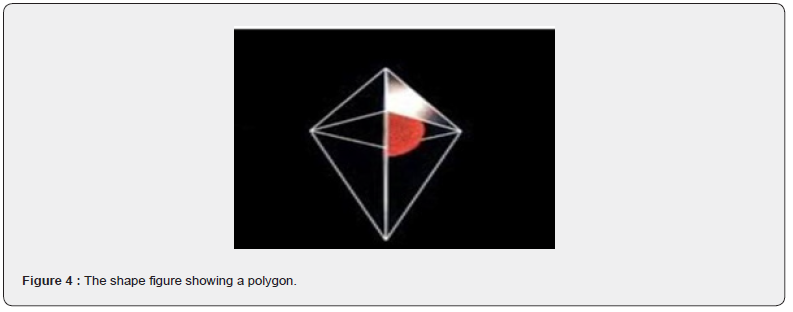
We tell them that the word “three-dimensional polygon” originates from a Greek word meaning “seat”. The prism and pyramid have many flat faces that resemble the seat as a base, while the cylinder is not considered three-dimensional because it has a curved face. We conclude the lesson by asking each group to count the number of faces in each shape, and then asking them to record their answers in their notebooks and present the answers of each group to the class Figure 5.
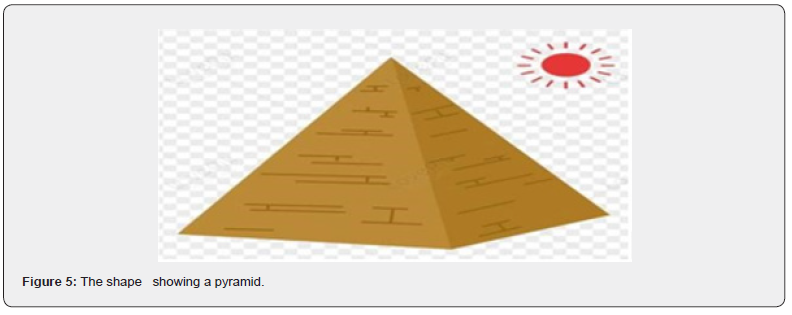
How 3D printing is revolutionizing educational experiences
In recent years, 3D printing has revolutionized many aspects of our lives, from how we create and manufacture products to how we teach and learn. As technology continues to advance, 3D printing is making its way into educational spaces around the world and influencing the way children learn and experience their education.
3D printing allows kids to bring their ideas to life. Educators can use 3D printing to bring a variety of topics to life for children, such as designing and printing 3D models of molecules, building physical models of structures, or designing and printing a prototype of a product. These handson applications of 3D printing can be used to help children better understand and interact with the materials they are learning.
In addition, 3D printing can also be used to give children knowledge and hands-on experience in the design process. From designing a product to creating a prototype, children at a given age can understand and learn the entire design cycle and see the process come to life before their very eyes. This kind of experience is very useful and helps children develop the skills they need to succeed in their lives.
Finally, 3D printing can provide children with the opportunity to explore new and exciting ways to solve problems. For example, children can use 3D printing to explore new ways to engineer a bridge or create a new type of prosthetic limb. These types of activities can inspire children to think outside the box and come up with innovative solutions to complex problems. This indicates the intellectual and mental development of children at an advanced age Figure 6.
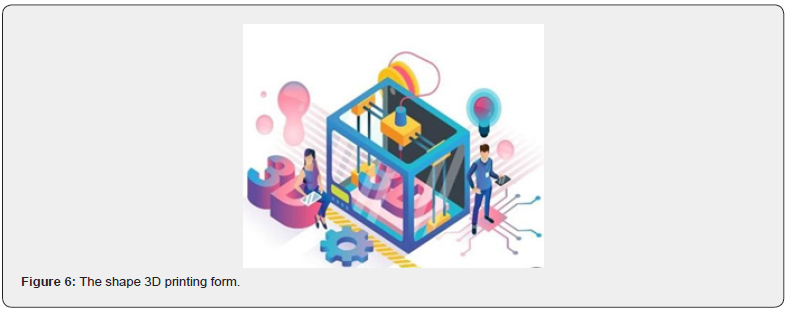
All in all, 3D printing is revolutionizing the way children learn and experience their educational journey. Thanks to its ability to bring ideas to life, give children hands-on experience in the design process, and provide them with opportunities to explore and solve problems, 3D printing helps shape the future of education, and one of its advantages is the development of intellectual and mental development in children [7,8].
Best applications of 3D printing in education and research:
Rapid Prototyping
a) 3D printing is increasingly being used in education and research to rapidly prototype components and models. This technology gives children, students, and researchers the opportunity to quickly and accurately bring their ideas to life. 3D printing also allows for rapid iteration when designs are tested and refined, making it a powerful tool for experimentation and innovation.
b) Low-cost manufacturing: 3D printing has enabled teachers and researchers to create lowcost items for educational and research purposes. Instead of relying on expensive suppliers and vendors, 3D printers can create internal components and models at a fraction of the cost. This technology is also ideal for creating custom parts and tools that can be used to test ideas and hypotheses.
Increase Engagement: 3D printing can be used to create interactive and engaging learning experiences in the classroom. Children, students and researchers can use 3D printing to bring their ideas to life and create tangible projects that can be used to supplement traditional educational materials. This can help improve participation and their interest in STEM subjects.
How do I use PowerPoint about 3D shapes in the classroom with children?
For an integrated and successful lesson about 3D shapes, the PowerPoint team designs 3D shapes that you can use in the classroom as a means of revision or a basic tool that you use at the time of explaining your lesson, or as an introductory exercise, PowerPoint contains a set of presentation slides that include questions about 3D shapes Dimensions and about their properties and names. A great file that will help children distinguish between 2D shapes and 3D shapes and differentiate between the properties of each.
By getting this Colorful Interactive 3D Shapes PowerPoint, you’ve got a great interactive tool for teaching kids 3D geometric shapes in a fun way. Display this tool on the classroom display board to get the children involved in the lesson and interact with you during the explanation [9,10].
On the educational website, you have an excellent collection of educational aids, activities, worksheets, and power points. To teach children everything related to geometric shapes in a variety of ways; In order to suit all children in accordance with their tendencies and abilities.
Conclusion
Through the research study of engineering technology sciences that we have done in finding the relationship between two-dimensional shapes (flat) and three-dimensional shapes (three dimensional) and printing them, for children, how can you help, explore and study three dimensional figures for children and the similarities, differences and differences between them and how to draw and use them, such as Plastic, cardboard, and thick papers. Making these shapes of their own will help children better understand the properties of them. The aim of the twodimensional geometric shapes project is to enable the child to know the number of their sides and vertices and draw the twodimensional shapes accurately. Geometric shapes help build memory and cognitive skills, especially when children begin to associate shapes with the world around them, and it helps to develop concentration, observation skills and strengthen visual memory. Through it, children learn geometric colors, whose benefits include drawing small drawings around us, and information about the surroundings of the drawing. We have noticed that educational tools that assist the child with learn and understand the number of skills and help in building computer skills for children in the future. Aids them in finding similarities and differences that appear on engineering projects to develop focus skills, strengthen their visual memory of the characteristics of three-dimensional shapes, which are shapes that have length, width and height such as cuboids, cubes and prisms, the trio from our study. By using PowerPoint, it is an amazing tool that will help children distinguish between two-dimensional shapes and threedimensional shapes, to make children participate in the lesson and interact with the teacher during the explanation Figure7.
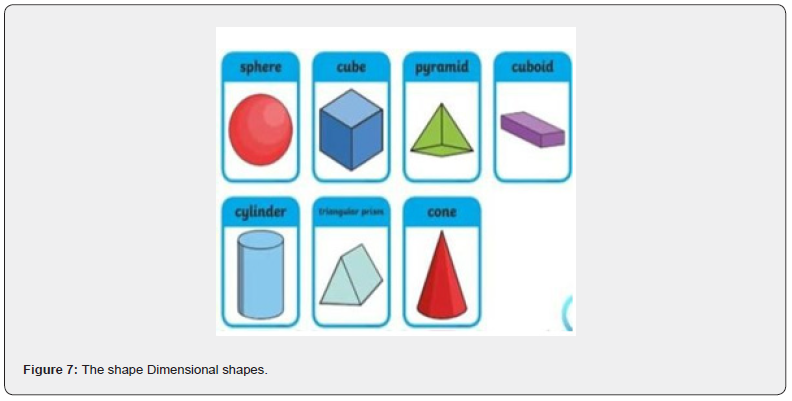
References
- Ahmed MES (2018) The Relationship between Three-Dimensional Objects and the Method of Representing It in Two-Dimensions, Cairo Publishing House, Egypt.
- Al Razz HED (2022) 2D, Publishing House, Beirut, Lebanon.
- Shawaheen K (2018) The stage of radiance as one of the stages of the creative process, Publishing House Egypt.
- Shawaheen K (2005) Developing Children's Thinking Skills, Publishing House, Egypt.
- Ahmed MM (2016) two- and three-dimensional design, Arabian Gulf Publishing House.
- Al-Jaghbir TS (2012) Binary Drawing, Arabian Gulf Publishing House.
- Mustafa Azzam MA (2013) Alienation and Westernization, Publishing House, Egypt.
- Rahman AA (2021)Introduction to 3D Printing, Morocco Publishing House.
- Jamar M (2016) 3D Printer, Publishing House, Egypt.
- Salad S (2017) the Three-Dimensional Mind, Noor Bookshop, Publishing House, Cairo.






























